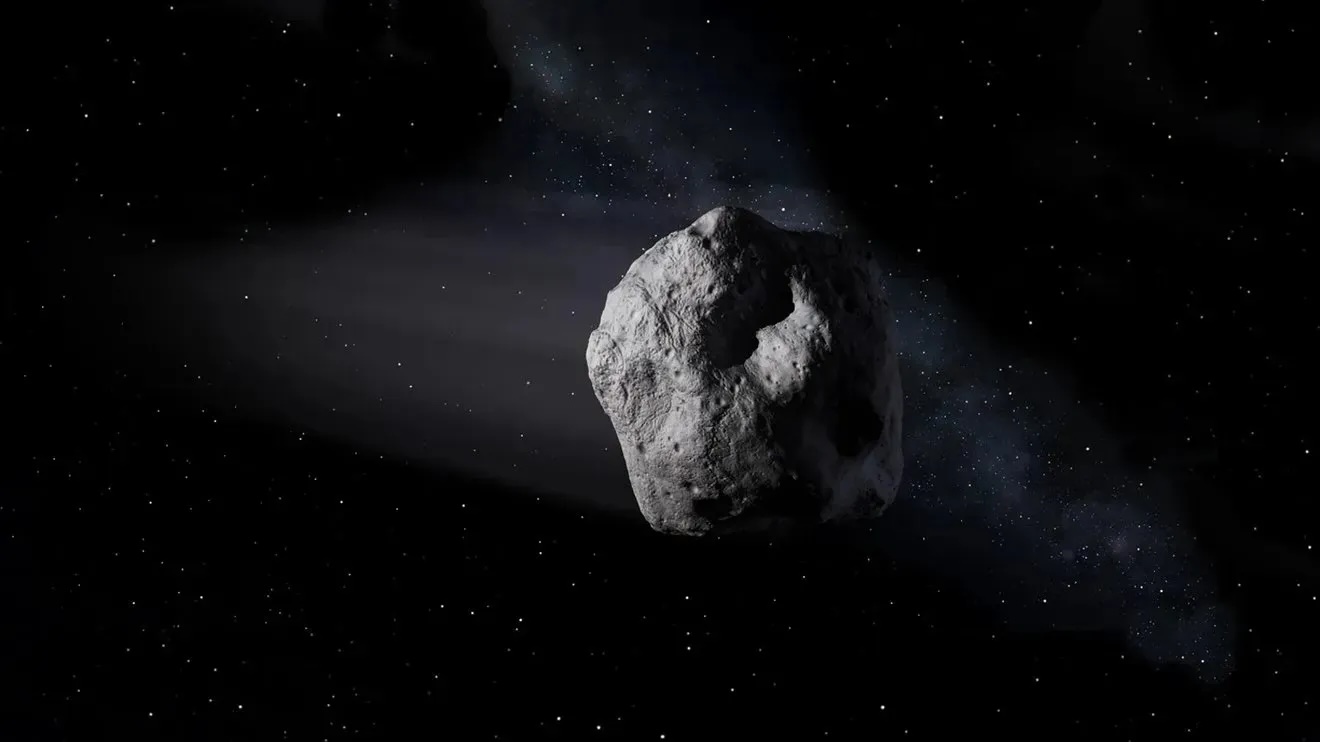When you buy through link on our land site , we may gain an affiliate perpetration . Here ’s how it works .
Humanity ’s most powerful place telescope is setting its sights on the most life-threatening get laid asteroid in thesolar system of rules .
According to ablog postfrom theEuropean Space Agency(ESA ) , an external squad of astronomers has been granted emergency consumption of the mightyJames Webb Space Telescope(JWST ) to observe the potentially hazardousasteroid 2024 YR4 in the come months . The construction - size of it space rock was discovered hurtling through our solar organization by NASA ’s Asteroid planetary - impact Last Alert System in December 2024 and presently sits atop the bureau ’s asteroid watch tilt , with a close to 1 - in-43 chance ( 2.3 % ) of impact our planet in December 2032 .

An illustration of a large asteroid approaching Earth. The building-size asteroid 2024 YR4 has a roughly 2.3% chance of hitting our planet in 2032.
Measuring a potential ‘killer’
Astronomers estimate that the asteroid measure rough 180 base ( 55 metre ) across , making it about as wide as the Leaning Tower of Pisa is tall . An wallop from such a rock would n’t trigger a aggregative defunctness like the much larger , dino - snuffingChicxulub impactordid 66 million years ago . But an asteroid that sizing could wreak regional mayhem similar to theTunguska impactorthat flattened some 80 million trees in the Siberian wilderness in 1908 , according to Live Science ’s sis siteSpace.com .
However , 2024 YR4 ’s current size is just an approximation based on ground - scope data . repress by Earth ’s ambience , these telescopes see only the sunlight reflected off of the asteroid ’s open , which paints a limited picture of its real size , according to ESA . The quad rock and roll could , in fact , be importantly larger than it seems .
pertain : NASA ’s most wanted : The 5 most dangerous asteroid to Earth

An illustration of the James Webb Space Telescope in orbit, where it can detect the heat emissions of near-Earth asteroids unhampered by our planet’s atmosphere.
" In general , the brighter the asteroid , the larger it is , but this relationship strongly depends on how reflective the asteroid ’s surface is , " ESA officials wrote in the web log post , which was shared Monday ( Feb. 10 ) . " 2024 YR4 could be 40 m [ 130 feet ] across and very reflective , or 90 m [ 295 feet ] across and not very reflective .
" It is very important that we improve our size estimate for 2024 YR4 : the chance represented by a 40 MB asteroid is very different from that of a 90 yard asteroid , " ESA added .
JWST to the rescue
The upcomingJWSTobservations will significantly meliorate our understanding of the asteroid ’s sizing , according to ESA .
Rather than look at reflected sunshine , JWST’sinfraredinstruments will study the heat give out by the asteroid itself , aid to cumber its true size and surface physical composition . The outer space - based JWST will also have a much clearer view of the asteroid compare with its ground - found twin , which must peer through the obnubilate veil of our planet ’s atmosphere to watch over near - Earth objective . ( NASAand ESA ’s plannednext generation of asteroid - trace telescopeswill also use infrared , for these reasons . )
— Watch likely ' city - killer ' asteroid 2024 YR4 as it hurl through distance

— ' City - killer ' asteroid has a 1 - in-43 chance of smashing into Earth in 2032 , NASA enunciate
— ' Like nothing we ’ve project before ' : James Webb telescope espy a secret asteroid - comet loan-blend lurking past Jupiter
JWST will first observe 2024 YR4 in March as the asteroid reaches its peak brightness , accord to ESA . In May , the telescope will detect the asteroid again as it zoom far aside from the sun — the final consider opportunity for this space rock until its next airless approach come in 2028 .

In amount , the team behind the research will utilize about four hours of JWST ’s time , which isstrictly budgetedthrough a competitive proposition process . The forthcoming asteroid observation will come out of JWST ’s " director ’s discretional time , " a little stash of research hours reserved for meter - tender observations that ca n’t wait for the next yr ’s proposal of marriage summons . All data from the reflection will be made publicly available upon spill .
You must confirm your public display name before commenting
Please logout and then login again , you will then be prompted to record your presentation name .













